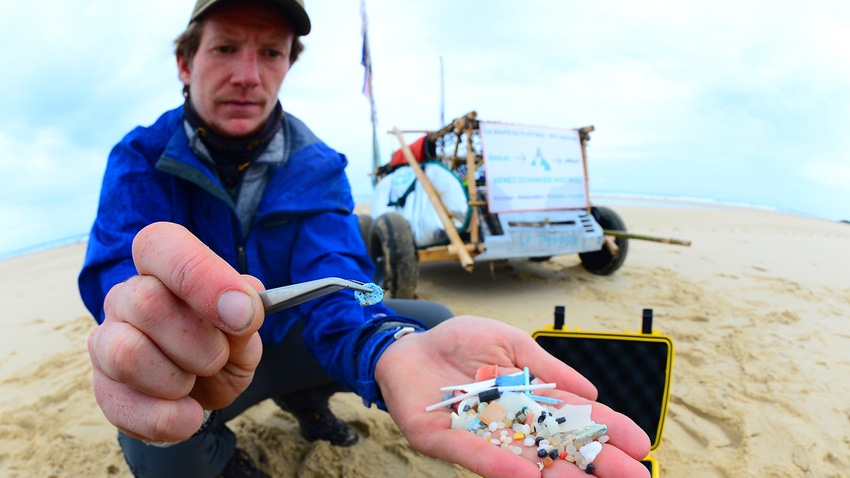Microplastics: They’re Here, They’re There, They’re Every Everywhere
Like soccer icon Roy Kent on the “Ted Lasso” series, micro- and nanoplastics seem to be everywhere, including in our bodies. How worried should we be?
January 22, 2024

One of the many memorable characters in the Ted Lasso series on Apple TV is the fictitious Roy Kent. He's a former superstar soccer player that was loved by the fans, so much so that they created a cheer that goes something like: "He’s here, he’s there, he’s every everywhere, ROY KENT!" (The show is rated TV-MA; this is a cleaned-up version of the chant.) This chant came to mind over the recent holiday break, as it exactly captures the latest deluge of research reports about micro- and nanoplastics.
Ocean plastics don’t stay in the ocean
For starters, it was discovered that microplastics in the ocean don’t stay in the ocean. In 2021, Hurricane Larry came ashore in Newfoundland directly from the Atlantic without passing over any prior land masses (potential sources of land-based microplastics). Realizing the value of these rare, pristine(?) samples, researchers hastily set up a sampling site and protocol (which involved going to the site every six hours in the midst of the hurricane!). They found that the storm deposited more than 100,000 particles per square meter per day. The days prior to and just after the storm had values of 10,000 to 20,000.
(I also found it ironic that the sampling vessels were held in place with zip-ties, a single-use plastic. Shame on you!)
The microplastics were a real mixed bag of polymers, not just the Big 6. PMMA was surprisingly common, as was polysulfone. Hurricane Larry had come across the Sargasso Sea, home to the North Atlantic Garbage Patch, so it would be interesting to see what happens with other hurricanes that follow different routes.
The other articles that filled my newsfeed in December involved nanoplastics. Not as much is known about nanoplastics, but like Roy Kent, they’re everywhere. New articles told of their distribution across most, if not all, of the planet including the polar regions. Their distribution doesn’t end there, but includes our bodies, the various organs that make us up, and even in our cells.
Nanoplastics unlikely to leach additives into our bodies
One problem is that we don’t know what impact nanoplastics have on our bodies. People can imagine endless nightmare scenarios, such as leaching of additives into our bodies. While it is true that the smaller the particle, the easier it is to leach out additives, this really shouldn’t be the concern that it is proposed to be. The moment an additive is compounded into a plastic, it can begin to leach (or diffuse) out, and this never stops. As the plastics breaks into smaller sizes — first as a microplastic — the leaching will accelerate, and this accelerates further as the size continues to decrease. The size reduction to nanoplastics occurs outside of our bodies, so that much or all the additives will have leached out before reaching our bodies. Such thoughts will not reach the news, however, as fearmongering will always be more popular in reporting.
The real challenge in discovering the health risks of nanoplastics is this: When nanoplastics are distributed so far and wide, how will it ever be possible to determine their impact on us and the environment? To reach such a conclusion, you need to have a control sample that is free of nanoplastics. Where can that be found? They’ re here, they’re there, they’re . . . .
About the Author(s)
You May Also Like




